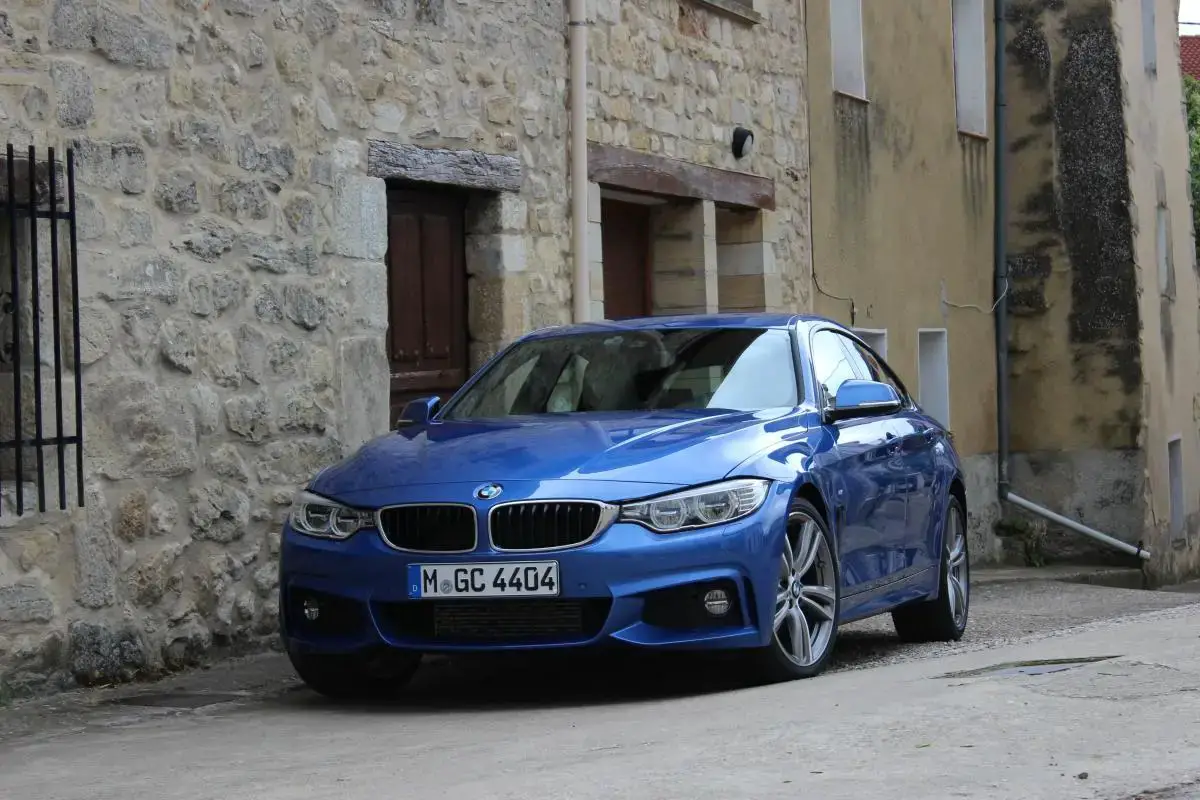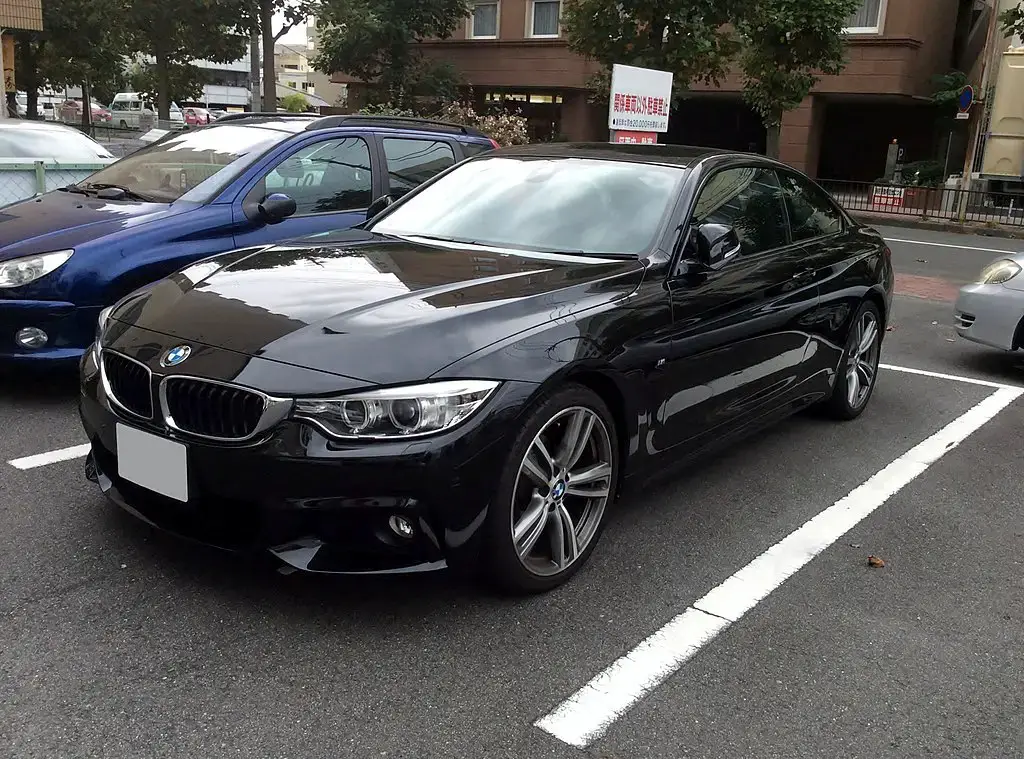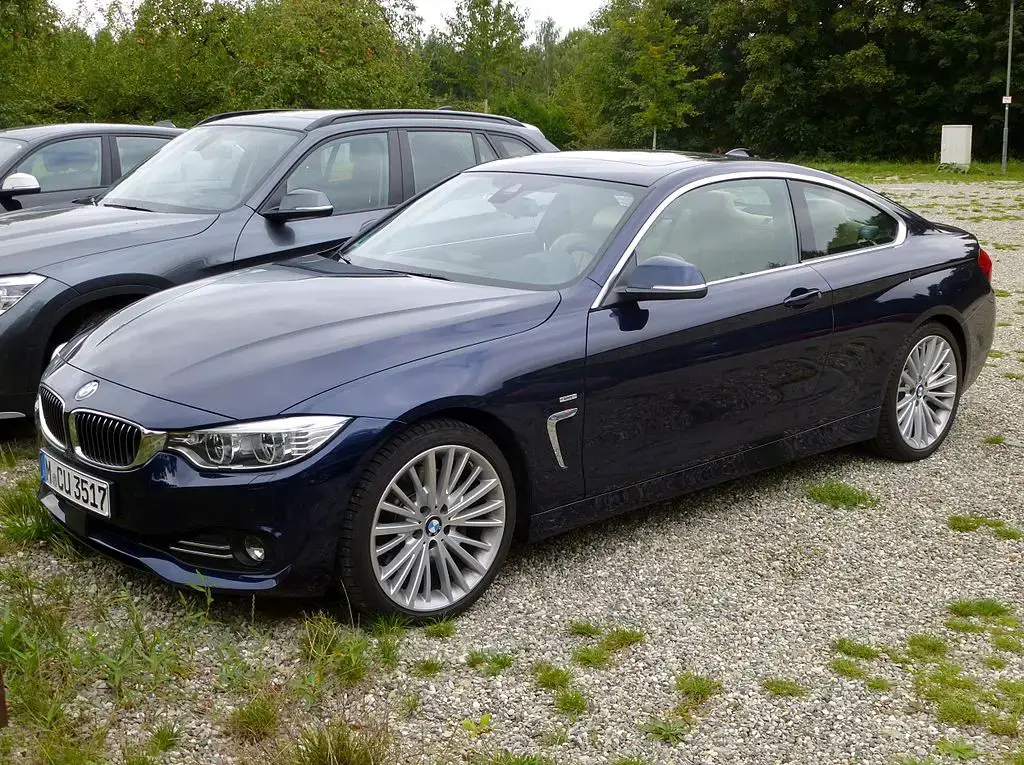Review: BMW 4 Series F32 ( 2013 – 2020 )

BMW 4 Series F32. Back to basics. So drop the mic and get on the dancing pole.
Of course, BMW like many other manufacturers also have to do industrial sell-out in order to finance their trully great and pants-filling cars. Porsche did it with the Cayenne, BMW did it with the X5, and Alfa Romeo did it with the Stelvio. There are times in life when it pays to sell yourself. How else do you think I can afford the hosting and domain for this online outhouse? Do you have any idea how much the domain costs? 20 pounds a year. Do you know how many days I have to spend in the back of supermarket parking lots to make that kind of money? Have you thought about that? No, you only think about yourself. Huoo…
Then comes the question, what do you do with the extra money from the profitable cars? You can be Carlos Ghoshn for example, former CEO of Nissan, and buy mansions and yachts. Or you can be Porsche and sell Taycans and Cayennes on the conveyor belt so you can finance every possible flavor of the legendary 911. Or be Alfa Romeo and sell so many Stelvio that you can afford to put a Ferrari engine in the Giulia.

And BMW? BMW puts out good cars the same way old people make love – rare but intense. In 2005 they launched the monstrous E60 M5 with the 5.0 V10 engine and 510 horsepower, and in 2008 they launched another monster – the only V8-powered BMW M3. All is well and good, but far from the original idea of the E30 or E39, regular cars you could have fun with. So in 2011 BMW relaunched with the 1 Series Coupe and the famous BMW 1M, a living classic. And now we’re back to the original recipe – manual transmission, rear-wheel drive, inline 6 cylinders, and 300+ horsepower. In Bavaria, there is still life.
Then comes a dark period, full of reliability issues, and in 2011 the new 3-Series comes out, set on big things and high hopes. The Germans chopped up the 3 Series in the following way. The sedan and wagon will remain with the 3 Series badge, and the coupe and convertible will become the 4 Series. They bolted in some boring engines and went to work. And they had to work because the BMW 4 Series F32 and this generation’s 3 Series had the nasty business of switching from naturally aspirated to turbocharged petrol and then there was the switch from V8 to l-6 turbo for the M3 and M4. And most importantly, the engineers on the BMW 4 Series F32 were left to deal only with the sport characteristics of a car and that’s it. We have sport suspension, we have lower ground clearance, and we have more powerful engines. We’ve got the arms welded directly to the chassis, no bushes. But wait, the madness continues. We don’t have spare tires, we just have run-flat tires. We don’t even have NCAP testing because BMW hasn’t bothered to put it through the tests so we probably have to go with the 3 Series tests. BMW 4 Series F32, the return of the sporty BMW.

BMW 4 Series F32 Engines
Petrol
- 1.5 Turbo of 134 horsepower – 3 cylinders in a 3 Series or 4 Series F32? Blasphemy! Until you find out that this engine was originally developed for the BMW i8 and then became a regular production engine. Anyway, no matter how much I talk about this engine, nobody bought it so I find myself talking to myself in the night.
- 2.0 Turbo of 181, 241, and 248 horsepower – Until 2014 we had the N20 engine, and after 2014 came the B48. Note these two engine codes. In any case, you should know that the B48 is a decently reliable engine.
- 3.0 Turbo of 302 and 322 horsepower – Until 2016 we have the N55 from the 435i and it basically has the same issues carried over from the N54, just on a smaller scale. And a high-pressure pump, and a water pump, and a thermostat, and a gasket. After 2016 the B58 comes in and it’s a decently reliable engine for 322 horses. Like fine connoisseurs in the arts of spirits, the B58 is dependent on antifreeze.
- 3.0 Twin-Turbo of 425, 444, 453, and 493 horsepower – Launched on the M3 and M4 and all the other bombastic versions, this engine is an evolution of the N55, which in itself is also an evolution of the N54. It can easily be tuned to 600+ horsepower and the only specific issue is with the crankshaft sprockets, sprockets that can fail but that’s also in rare cases. Those sprockets should hold the crankshaft fixed, but that 600 – 700 horsepower can push it down the stairs beyond repair.
Diesel
- 2.0d of 141, 148, 181, 188, 215, and 221 horsepower – Engines up to 2015 are the hated N47 which has timing issues and after 2015 the B48 came online. I talked extensively about this engine in the 3 Series article.
- 3.0d of 255 and 308 horsepower – Unlike the 2-liter cousin that was retired in 2015, the 3-liter kept the N57 because it’s not necessarily a bad engine. Sure, it has the timing issues BMW has gotten us used to, only less often. Watch out instead for the turbos that have a habit of nervously giving way. Especially the twin-turbo 308 horsepower version.

BMW 4 Series F32 General Issues
- First, we have the engines. All engines have issues with seals and oil leaks, everywhere. On top of that, oil changes every 5,000 miles are recommended to keep problems at bay. And engines from 2014 – 2017 have issues with the EGR cooler.
- It’s a BMW so I have to talk about complementary issues on the electrical side, especially infotainment.

BMW 4 Series F32 Verdict
For a modern BMW, the BMW 4 Series F32’s list of general issues is so short it’s like a summer dancer’s skirt somewhere on a cube somewhere on a beach. It’s an old-fashioned BMW that’s decently reliable and sporty enough even with small engines. Sure, it won’t be a cheap car to maintain because it’s a modern BMW, but unlike most, the BMW 4 Series F32 really is a civilized car in terms of cost. BMW 4 Series F32 – back to the basics.
Which engines do I recommend? For petrol, any 2.0 turbo petrol after 2014 does the job decently and 3.0 turbo petrol after 2016 does the job properly, and for diesel 420d 2.0 diesel B48 after 2015.
Similar Articles

Review : Toyota Verso AR20 ( 2009 – 2013 )

Review : Skoda CitiGO ( 2011 - 2020 )

Review : Seat Mii ( 2011 - 2020 )
Write an answer
- Review : Toyota Verso AR20 ( 2009 – 2013 ) 10 November 2025
- Review : Skoda CitiGO ( 2011 - 2020 ) 02 August 2025
- Review : Seat Mii ( 2011 - 2020 ) 02 August 2025
- December 2025
- November 2025
- October 2025
- August 2025
- July 2025
- April 2025
- March 2025
- February 2025
- January 2025
- December 2024
- November 2024
- October 2024
- August 2024
- July 2024
- June 2024
- May 2024
- April 2024
- March 2024
- February 2024
- January 2024
- December 2023
- November 2023
- October 2023
- September 2023
- August 2023
- July 2023
- June 2023
- May 2023
- April 2023
- March 2023
- February 2023
- January 2023
- December 2022
- November 2022
- October 2022
- September 2022
- August 2022
- July 2022
- June 2022
- May 2022
- March 2022
- April 2021
- January 2021
- December 2020
- November 2020
- October 2020
- September 2020
- August 2020
- July 2020
- March 2020
Do you mean b47 for diesel the b48 you recommend is petrol